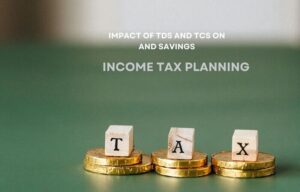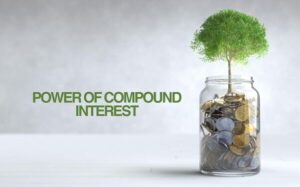Understanding the Impact of Interest Rates on Fixed Deposits

Fixed deposits (FDs) have long been a preferred choice for risk-averse investors seeking stable and secure returns. One of the most significant factors affecting the returns on FDs is the interest rate. In this article, we’ll explore the impact of interest rates on fixed deposits and how they can influence the returns earned. We’ll also discuss the relevance of interest rates, and provide insights into how to calculate FD interest.
Interest Rates and Fixed Deposits: A Fundamental Connection
Interest rates are the lifeblood of fixed deposits. They determine the rate at which your invested capital grows over time. When you deposit your money in an FD, you essentially lend it to the bank for a specified period. In return, the bank pays you interest on your deposit. This interest rate is what can significantly impact the returns you earn.
Impact of Interest Rates on Fixed Deposits
Interest rates play a crucial role in influencing the returns on your fixed deposits. Let’s explore this impact in detail:
1. Direct Relationship:
Interest rates and FD returns share a direct relationship. When interest rates are high, your FDs earn more interest, resulting in higher returns. Conversely, when interest rates are low, the returns on your FDs are lower.
For instance, consider an investment of ₹1,00,000 in a YES Bank FD. Let’s explore how different interest rates can affect the returns over a one-year tenure:
- At 5% p.a. interest rate, your FD would earn ₹5,095 in interest.
- At 7% p.a. interest rate, the interest earned would be ₹7,186.
- At 8% p.a. interest rate, the interest earned would amount to ₹8,243.
The difference in returns between a 5% p.a. and a 8% p.a. FD is quite substantial, highlighting the direct relationship between interest rates and FD returns.
2. Tenure Matters:
The impact of interest rates on fixed deposits becomes more pronounced with longer tenures. When you lock in your money for an extended period at a high-interest rate, your returns accumulate significantly over time. Conversely, low-interest rates can reduce the growth of your capital.
For instance, let’s consider a two-year fixed deposit at different interest rates:
- At 6% p.a. interest rate, your ₹1,00,000 investment would earn ₹12,649 in interest over two years.
- At 8% p.a. interest rate, the interest earned would amount to ₹17,166.
The difference in returns between these two scenarios becomes more evident over a longer tenure.
3. Economic Factors:
Interest rates are influenced by various economic factors, including inflation, central bank policies, and market conditions. When the central bank increases interest rates to combat inflation, it can lead to higher FD rates, positively impacting returns. Conversely, in a low-interest-rate environment, FD returns may be less attractive.
4. Periodic Interest Payouts:
Fixed deposits can offer both cumulative and non-cumulative options. In non-cumulative FDs, you receive periodic interest payouts, which can be a source of regular income. Higher interest rates result in more substantial periodic interest payments, increasing your cash flow.
How to Calculate FD Interest
Calculating the interest on your fixed deposit is essential to understand how interest rates impact your returns. The formula for calculating FD interest is as follows:
A = P × (1 + r/n)^(n*t)
Where:
– A is the maturity amount, including the principal amount and interest.
– P is the principal amount (initial deposit).
– r is the annual interest rate (in decimal form).
– n is the number of times interest is compounded per year.
– t is the number of years the money is invested for.
For example, if you invest ₹1,00,000 (P) in a fixed deposit with a 7% (r) interest rate compounded annually (n = 1) for 2 years (t), the calculation would be as follows:
A = 1,00,000 × (1 + 0.07/1)^(1*2)
A = 1,00,000 × (1.07)^2
A = 1,00,000 × 1.1449
A ≈ ₹1,14,490
In this scenario, the maturity amount (A) after two years would be approximately ₹1,14,490. The interest earned would be ₹14,490, which is the difference between the maturity amount and the principal amount.
Conclusion
Interest rates are pivotal in determining the returns on your fixed deposits. The higher the interest rate, the greater the returns you can expect. Understanding this relationship is crucial when making investment decisions. As seen in the examples, even a slight difference in interest rates can have a substantial impact on your returns. So, when considering fixed deposits, always evaluate the current interest rate environment and choose an option that aligns with your financial goals and risk tolerance.
Read More:
5 Best Tax Saving Fixed Deposits To Invest In 2023

Pranab Bhandari is an Editor of the Financial Blog “Financebuzz”. Apart from writing informative financial articles for his blog, he is a regular contributor to many national and international publications namely Tweak Your Biz, Growth Rocks ETC.






